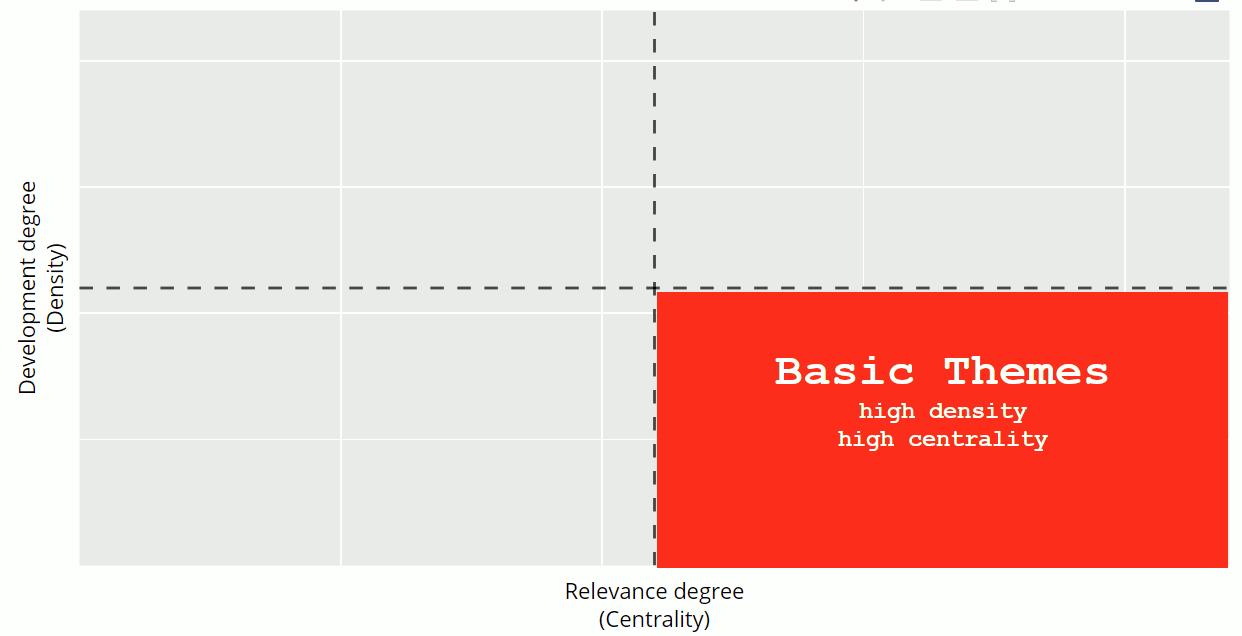Thematic Evolution Map
A three periods partition proposal
Based on previous findings, three periods were selected as default: a first period, from 1969, when the first article that appears in Scopus using the concept human flourishing, to 2004, the moment when the exponential trend is already consolidated; a second period begins in 2005 and goes until 2015, when the exponential trend keeps growing and the academic productivity is increased constantly year by year; finally, the third period, from 2016 to 2021, the last 5 years, to capture the most recent trends also coinciding with a peak in 2016 and 2017.
Figure 4.1. Evolution map of the keywords associated with human flourishing, clustered according their co-occurrence in the same document. The data was filtered selecting keywords that appear at least with a frequency of 5/1000 times among the 250 most frequent keywords.
Themathic Evolution Map App
Over, a thematic distribution of keywords clustered by their co-occurrence frequency. When two keywords occur together within the same document, they increase their co-occurrence frecuency, being clusterized by means of the equivalence index (Callon et al., 1991). The thematicEvolution() function of bibliometrix package performs this measure, locating the clusters in a Cartesian coordinate system, generating four different spaces according to the Callon’s centrality, which gives the degree of interaction of the cluster with other clusters in the x axis; and the Callon’s density, which provides the internal strength of the cluster in the y axis (Cobo et al., 2011). These four generated spaces are:
Basic themes: high centrality and low density;
Motor themes: high centrality and high density;
Niche themes: low centrality and high density;
Emerging or Declining themes: low centrality and low density;

Figure 4.2. Disaggregated periods showing more specifically the keyword composition of each cluster and its position according to the centrality and density measures. Again, the data were filtered using keywords that appear at least with a frequency of 5/1000 times among the 250 most frequent keywords.